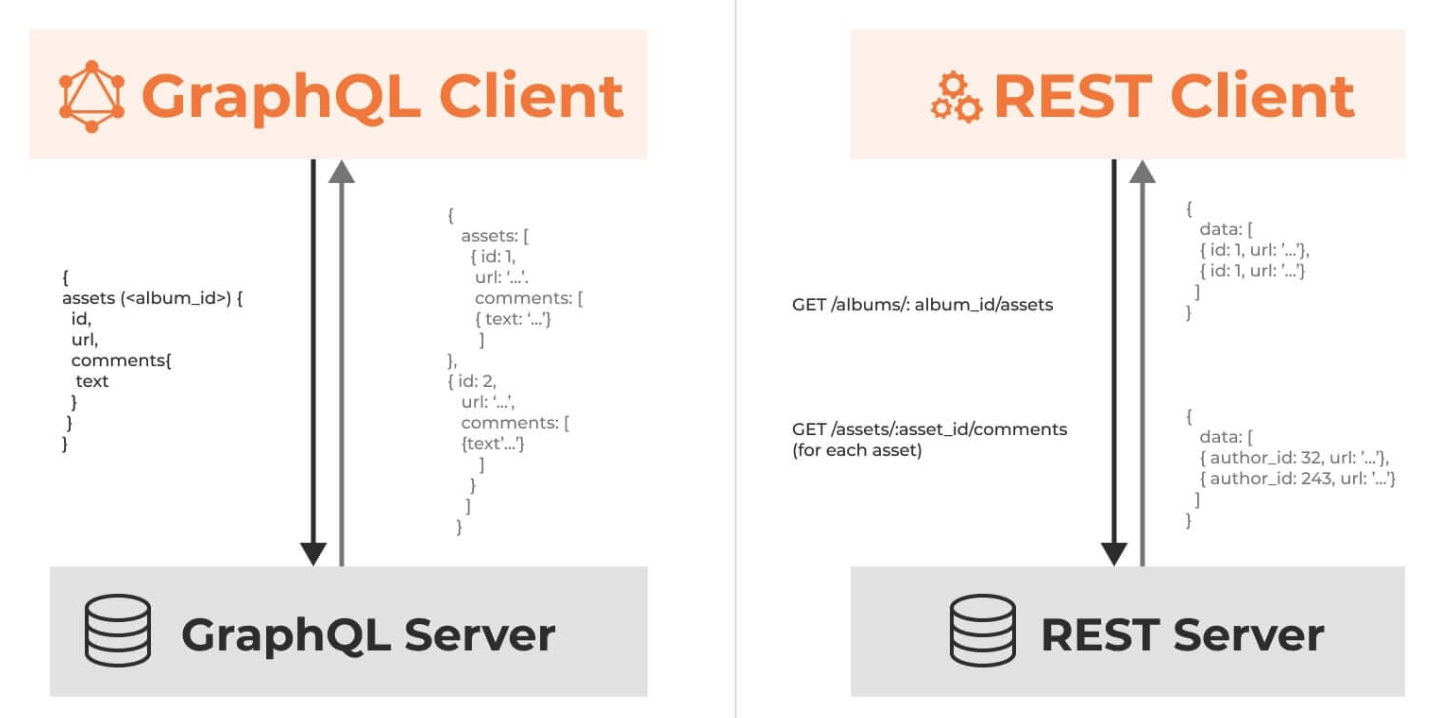GraphQL vs REST
What’s the Difference Between GraphQL and REST?

GraphQL and REST are two distinct approaches to designing API for exchanging data over the internet. REST enables client applications to exchange data with a server using HTTP verbs, which is the standard communication protocol of the internet. On the other hand, GraphQL is an API query language that defines specifications of how a client application should request data from a remote server. You can use GraphQL in your API calls without relying on the server-side application to define the request. Both GraphQL and REST are powerful technologies behind most of our modern applications.
GraphQL vs REST
| REST | GraphQL | |
|---|---|---|
| What is it? | REST is a set of rules that defines structured data exchange between a client and a server. | GraphQL is a query language, architecture style, and set of tools to create and manipulate APIs. |
| Best suited for | REST is good for simple data sources where resources are well defined. | GraphQL is good for large, complex, and interrelated data sources. |
| Data access | REST has multiple endpoints in the form of URLs to define resources. | GraphQL has a single URL endpoint. |
| Data returned | REST returns data in a fixed structure defined by the server. | GraphQL returns data in a flexible structure defined by the client. |
| How data is structured and defined | REST data is weakly typed. So the client must decide how to interpret the formatted data when it is returned. | GraphQL data is strongly typed. So the client receives data in predetermined and mutually understood formats. |
| Error checking | With REST, the client must check if the returned data is valid. | With GraphQL, invalid requests are typically rejected by schema structure. This results in an autogenerated error message. |
When it comes to API design, REST and GraphQL each have their own strengths and weaknesses.
REST
- Uses standard HTTP methods like GET, POST, PUT, DELETE for CRUD operations.
- Works well when you need simple, uniform interfaces between separate services/applications.
- Caching strategies are straightforward to implement.
- The downside is it may require multiple roundtrips to assemble related data from separate endpoints.
GraphQL
- Provides a single endpoint for clients to query for precisely the data they need.
- Clients specify the exact fields required in nested queries, and the server returns optimized payloads containing just those fields.
- Supports Mutations for modifying data and Subscriptions for real-time notifications.
- Great for aggregating data from multiple sources and works well with rapidly evolving frontend requirements.
- However, it shifts complexity to the client side and can allow abusive queries if not properly safeguarded
- Caching strategies can be more complicated than REST.
The best choice between REST and GraphQL depends on the specific requirements of the application and development team. GraphQL is a good fit for complex or frequently changing frontend needs, while REST suits applications where simple and consistent contracts are preferred.
